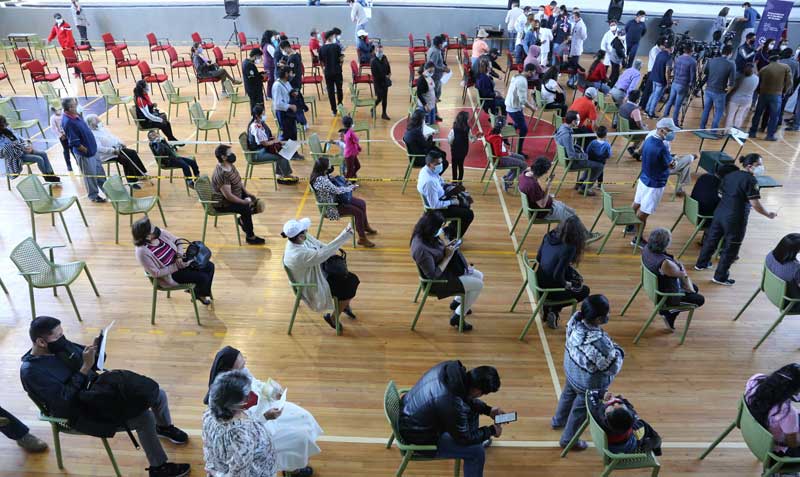An institution that is committed to peace, human rights, the environment and a fair distribution of wealth, that is right. You would think, but goodness can quickly get a bit out of hand these days. As if preaching peace is suspect in advance. Take the United Nations in New York, founded when the world was tired of waging war. The criticism is not unfounded. The UN is bureaucratic, corrupt, keeps too much distance from the citizen and all the sweet talk doesn’t work out. The U.S. government has had nothing to do with the UN for years. Time to drop by. I went on a tour of the UN building.
You don’t just come in. First register, have yourself photographed and searched. Our group is led by Julia. She speaks English with a Spanish twist. Julia will hold a thermos for the entire tour, without taking a sip. The visitor should know that filming is not allowed. Photos are allowed. I first capture Nelson Mandela’s open arms and focus on a framed carpet with an image of Kurt Waldheim. The Austrian was secretary-general of the UN for nine years, despite a war history as a Nazi officer.
–
–
The decor also looks much bigger on TV than it actually is. As if I had blown the power.
I have seen on TV countless plenary sessions, famous and infamous speeches, UN Security Council meetings. I’ve never had an affinity with it. I saw it too much as a regular news item, in case the world threatens to end. If that doesn’t happen, the power of the foreboding will diminish anyway. The decor also looks much bigger on TV than in reality. As if I had blown the power. In fact it is so common. Think of a large congress building with a maze of musty rooms without windows. The main seats are designed not to slide or to sit on for long periods of time.
–
–
“Are the chairs from Ikea?”
The UN exists by the grace of its 193 member states. The room of the UN Security Council was donated by Norway in 1952, the room where socio-economic issues are discussed was at the expense of Sweden. “Are the chairs from Ikea?” someone asks. We are not allowed to see the room next door. There, delegations exchange ideas without prying eyes. A kind of ‘Newsport code’ applies in the room: everything that is said stays in this room. The media and the public are kept out at all times. The closed doors are a gift from Russia.
Member States are also required to pay annual contributions. The Netherlands paid $37,808,350 million on time this year. Germany puts more than 169 million dollars on the table and Russia more than 67 million. The Americans are way behind with the payment of 674 million and that’s not just Julia’s concern. She speaks routinely, so you won’t be shocked by sentences like: “In 2050 there will be more plastic than fish in the oceans”, or “Hunger levels have risen sharply in recent years.”
Also in the corridors of the UN are people who only hear themselves talk.
Two men in ties walk past in a step that betrays that they know the way. The loud conversation in labored English is about Benghazi, in Libya. “I was there when the fighting was heaviest. So don’t tell me.” The listener can only nod, then they disappear into the elevator. Also in the corridors of the UN are people who only hear themselves talk.
The UN organization does not have its own army. The 90,000 soldiers are temporarily made available by the member states. The tour guide asks the group a question. “Which country provides the most UN soldiers for international peacekeeping missions?” I throw Germany into the group as a matter of course. “China”, shout two Chinese. We’re all right next to it. The correct answer is Ethiopia. I never imagined that Ethiopia has 8300 soldiers on the international front, especially in Africa. There are risks associated with peacekeeping. In total, nearly 4,000 UN soldiers were killed. Julia estimates the Al-Qaeda front in Mali as the most dangerous peacekeeping mission today.
It comes with a $1200 price tag.
After an hour, Julia delivers us to the exit and takes our badges. I stop outside for a moment at a large artwork of a revolver with the barrel tied in a knot. It is a present from Luxembourg. In addition to UN mugs and UN ties, I can also buy a replica of the Luxembourg art revolver in the UN souvenir shop. It comes with a $1200 price tag.
The price is not right, but the good message is.
–
–


